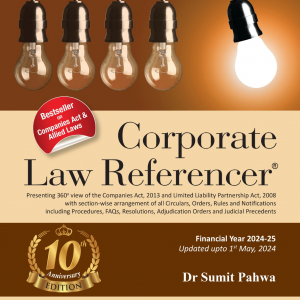The Reserve Bank of India today released the Macroeconomic and Monetary Developments in 2012-13. The document serves as a backdrop to the Monetary Policy Statement 2013-14 to be announced on May 3, 2013. Highlights:
Overall Outlook
Macro-financial risks require cautious monetary policy stance ahead
In view of macro-financial risks that stay significant, headline inflation remaining above the threshold and consumer price inflation remaining high, the space for action for 2013-14 remains very limited. If some of the risks come to fore, policy re-calibration may become necessary in either direction.
Slow-paced recovery is likely later in 2013-14, contingent on improved governance and concerted action to resolve structural bottlenecks, especially in infrastructure sector. Output gap is likely to reduce, but remain negative.
Headline inflation is likely to remain range-bound in 2013-14, with some further moderation in H1 due to subdued producers’ pricing power and falling global commodity prices, before it increases somewhat in H2 largely due to base effects.
Reserve Bank’s survey of outside professional forecasters shows anticipation of a modest recovery with growth in 2013-14 at 6.0 per cent from 5.0 per cent and average WPI inflation to moderate to 6.5 per cent from 7.3 per cent. Surveys show that inflation expectations have moderated slightly, while business expectations remain subdued.
Global Economic Conditions
Global growth likely to stay sluggish, commodity price inflation soft
Global growth turned weaker in 2012 and is expected to stay sluggish in 2013. Fiscal adjustments will drag growth down in advanced economies and delay cyclical recovery in emerging market and developing economies.
Outlook for global commodity prices, including metals and oil, remains benign. It should help reduce imported inflation, subject to broadly stable exchange rate. However, some risks remain from the large and continuous doses of quantitative easing.
Global financial market conditions have improved as a result of unconventional monetary policy easing and supportive policy actions. However, tail risks remain significant, calling for committed action to reduce balance sheet exposures and prepare adequate buffers against possible contagion risks.
Indian Economy
Output
Slowdown persists in the economy with services sector witnessing moderation
During 2012-13, slowdown persisted as mining and manufacturing activity stalled, agriculture output was affected by temporal and spatial deficiency in rains and services sector witnessed moderation. Growth is likely to have stayed low in Q4 of 2012-13.
Growth is hobbled by structural bottlenecks. Shortages of power, coal and natural gas, stoppage of mining activity in some states following legal enforcements on illegal mining have emerged as a major constraining factor for industrial growth. Core industries have underperformed in this backdrop.
The Reserve Bank’s Order Books, Inventory and Capacity Utilisation Survey show that the slack in capacity utilisation persisted in Q3 of 2012-13. New orders picked up marginally. Inventory as a ratio of sales, reached its lowest for finished goods, but highest for raw materials in the past five quarters.
Investment cycle downturn continues, consumption moderates
Aggregate demand remained sluggish with inflation adversely impacting real consumption and cyclical and structural factors impeding investment. Investment decline was accompanied by decline in saving rate as persistence of inflation eroded financial savings of the households.
Corporate sales growth moderated in Q3 of 2012-13 to its lowest level since Q3 of 2009-10. Operating profits grew at a positive rate.
Planned corporate investment moderated sharply in Q3 of 2012-13, thus continuing with the downturn that began in H2 of 2010-11. There is urgency for addressing bottlenecks in coal, power, road and telecommunication sectors to revive investment and growth.
Momentum towards fiscal consolidation since middle of 2012-13 continues. As a result, fiscal risks have been lowered but they have not waned. If growth slows down further, it could result in revenue shortfalls and a resurgence of fiscal risks.
Removing structural impediments and public investment stimulus to crowd-in private investment can turn around falling investment. However, this would need to be balanced by offsetting reductions in government’s current expenditures.
External Sector
CAD risks stay though fall in global commodity prices bring temporary respite
Modest pick-up in exports in Q4 of 2012-13 and some deceleration in imports are likely to help moderate current account deficit (CAD) in Q4 of 2012-13 after a record high of 6.7 per cent of GDP in Q3. Despite this, the CAD/GDP ratio for the year 2012-13 is expected to be around 5.0 per cent, twice the sustainable level.
High CAD in Q3 of 2012-13 was adequately financed by capital inflows, without any reserves depletion. CAD in 2013-14 is likely to benefit from moderation in global commodity prices. Yet, its sustainability continues to face risk from event shocks that may cause a sudden stop or reversal of capital inflows.
External vulnerability indicators worsened further in Q3 of 2012-13. India’s external debt rose, reflecting continued dependence on ECBs and short-term borrowings to meet the widening CAD. Short-term debt on a residual maturity basis increased to 44 per cent of total debt and 56 per cent of the foreign exchange reserves by end-December 2012.
Monetary and Liquidity Conditions
Monetary conditions may evolve with macroeconomic developments and shifting growth-inflation dynamic
Using the limited monetary space, the Reserve Bank eased monetary policy during 2012-13 in a calibrated manner by cumulatively reducing policy rates by 100 basis points and injecting ` 1.5 trillion of primary liquidity through outright open market operations. Besides, it injected ` 1.3 trillion of primary liquidity through reductions in cash reserve ratio since January 2012.
During 2012-13, broad money growth remained on the indicative trajectory and reserve money adjusted for CRR changes grew at a reasonable pace. However, non-food credit growth remained below the indicative trajectory, reflecting growth slowdown and risk aversion among banks from deteriorating asset quality.
Financial Markets
Strong FII flows augured well for Indian rupee and equity markets
Strong FII inflows, especially in H2 of 2012-13 augured well for the Indian equity markets and the rupee. Money markets remained orderly, despite year-end liquidity pressures. G-sec yields softened during Q4 of 2012-13, although with some increase at the year-end.
Primary markets remained subdued during 2012-13, though resource mobilisation through mutual funds and Qualified Institutional Placements gathered some momentum during the year.
The Reserve Bank’s House Price Index increased 26 per cent y-o-y during Q3 of 2012-13, with annual increase hovering around 20 per cent for the past eight quarters. Transaction volumes registered a growth of 14 per cent during Q3.
Price Situation
Inflation risks remain despite moderation in headline inflation
Headline inflation and demand-side pressures have moderated, but inflation risks remain reflected in double-digit consumer price inflation, food supply constraints and suppressed inflation in energy segment, including diesel, coal and electricity.
Persistent pressures from wages remain a major risk to inflation moderation. Although the pace of increase in rural wages moderated a bit, it remains high.
Divergence between WPI and CPI inflation has widened on account of higher food inflation and other factors such as increase in housing rents and transportation costs.
————————————————–
Document available for download
————————————————–






